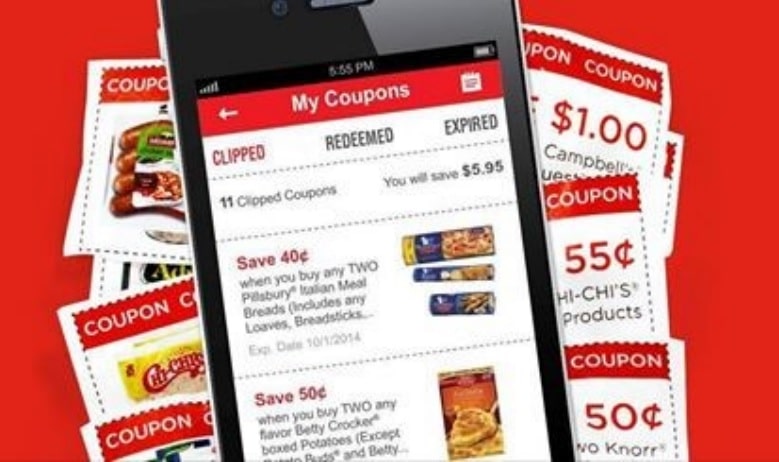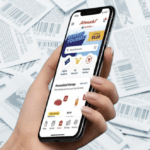
It’s been a tough few years for couponers, as brands scaled back on promotions during the Covid pandemic and never really ramped them up again, even as grocery prices skyrocketed. And the fewer coupons there were, the fewer coupons were used, at a time when shoppers needed them the most.
But that finally may be starting to change.
There are two main headlines from Inmar Intelligence’s latest look at the numbers, as presented in its Mid-Year Promotions & Incentives Trends Analysis webinar. The first is that years of declining coupon use appears to have bottomed out, as couponing is finally on the rise again. The second is that years of increasing digital coupon use has reached a notable new milestone – for the first time ever, digital coupons now make up the majority of all coupons used, surpassing all forms of paper coupons in popularity.
Inmar calculates that 416 million coupons were used in the first half of this year. That’s less than half the number of coupons redeemed at the midyear mark just five years ago, which itself was less than half the number of coupons redeemed five years before that. Nevertheless, 2023’s midyear total is up 8% from this same time last year, which is notable – because if that trend holds, this could become the year that coupon use actually increases for the first time in more than a decade.
Until now, despite economic pressures, mainstream publicity in the form of shows like Extreme Couponing, and the increasing ease and availability of digital coupons, coupon use has experienced a long, steady decline. The last time coupon use actually increased was during the Great Recession that started about 15 years ago. But even that increase was really just a blip, as the overall coupon redemption rate had been trending down for far longer. Last year’s total of 770 million coupons redeemed marked the first time since the early 1960’s that fewer than a billion coupons were redeemed in a year.
So couponing is looking up. And if coupon use does continue to rise, it’s no thanks to paper coupons. Just two years ago, the use of digital coupons surpassed the most popular form of paper coupons, found in your Sunday newspaper inserts, for the very first time. In the second quarter of this year, steadily-climbing digital coupon use reached the 50% mark, meaning half of all coupons used are now digital. Sunday insert coupons historically have represented roughly 90% of all coupons distributed, but so far this year, that percentage is just 75.9%, while their share of redemption has plunged to an all-time low of just 6.7%.
“Newspapers continue to decline and brands are running fewer programs,” Inmar observed. Several manufacturers that once frequently ran offers in the Sunday inserts “have pulled back considerably this year, and shoppers are less engaged with this method.”
The use of paper versus digital coupons has always been something of a chicken-and-egg situation – are brands offering fewer paper coupons because fewer people want them, or are fewer people using paper coupons because brands are offering fewer of them? Are people using more digital coupons because they like them, or because that’s where the offers are? Perhaps a bit of both. With brands’ marketing budgets “further shifting to digital programs… prices still high at the supermarket, and shoppers still desperate for savings, digital redemption continues to rise,” Inmar noted.
More than half of shoppers in a recent Inmar survey said they are actively looking for ways to save money on groceries. That includes people who didn’t previously use coupons – a third of them said rising grocery prices have prompted them to start using digital coupons.
And what they’re finding, they’re apparently liking. Coupons are slowly becoming more aligned with what shoppers say they want. Last year, coupons for food, which shoppers have long said they value most of all, were harder to find than ever. Only 12% of all available coupons were for edible items, an all-time low. So far this year, that percentage is up to 21%, and more coupons are being redeemed as a result. It’s also helping that coupon face values are going up, in keeping with inflation. The average face value for food coupons this year is up 16%, to $1.47. Nonfood coupon values are up 11%, to $2.55.
Perhaps the most surprising of Inmar’s findings is just how much younger shoppers still have to learn about coupons and saving money. Among Gen Z shoppers, many of whom are grocery shopping for themselves for the first time, 25% said they don’t know where to find coupons. Their parents and grandparents used to clip them from the newspaper, but your average Gen Z shopper doesn’t get the Sunday paper. And they must not spend much time on their grocery store’s website or app, or they’d know that’s where the digital coupons are.
Inmar is confident the trends we’re seeing so far this year will continue, and coupon use will rise further. And once the newest generation figures out where to find them, coupons may finally be coming back.
Image source: Hy-Vee















